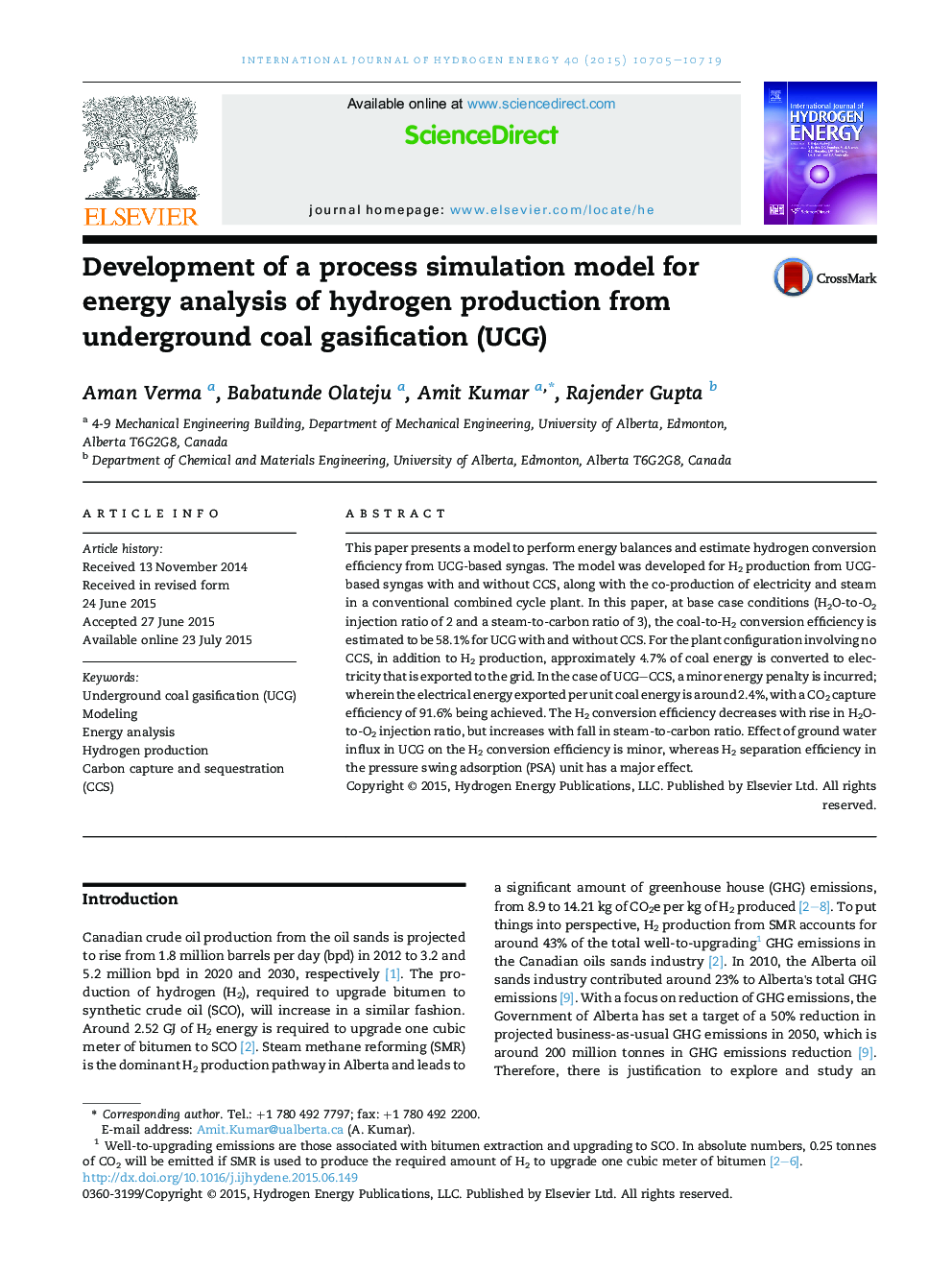| Article ID | Journal | Published Year | Pages | File Type |
|---|---|---|---|---|
| 7714349 | International Journal of Hydrogen Energy | 2015 | 15 Pages |
Abstract
This paper presents a model to perform energy balances and estimate hydrogen conversion efficiency from UCG-based syngas. The model was developed for H2 production from UCG-based syngas with and without CCS, along with the co-production of electricity and steam in a conventional combined cycle plant. In this paper, at base case conditions (H2O-to-O2 injection ratio of 2 and a steam-to-carbon ratio of 3), the coal-to-H2 conversion efficiency is estimated to be 58.1% for UCG with and without CCS. For the plant configuration involving no CCS, in addition to H2 production, approximately 4.7% of coal energy is converted to electricity that is exported to the grid. In the case of UCG-CCS, a minor energy penalty is incurred; wherein the electrical energy exported per unit coal energy is around 2.4%, with a CO2 capture efficiency of 91.6% being achieved. The H2 conversion efficiency decreases with rise in H2O-to-O2 injection ratio, but increases with fall in steam-to-carbon ratio. Effect of ground water influx in UCG on the H2 conversion efficiency is minor, whereas H2 separation efficiency in the pressure swing adsorption (PSA) unit has a major effect.
Keywords
Related Topics
Physical Sciences and Engineering
Chemistry
Electrochemistry
Authors
Aman Verma, Babatunde Olateju, Amit Kumar, Rajender Gupta,
